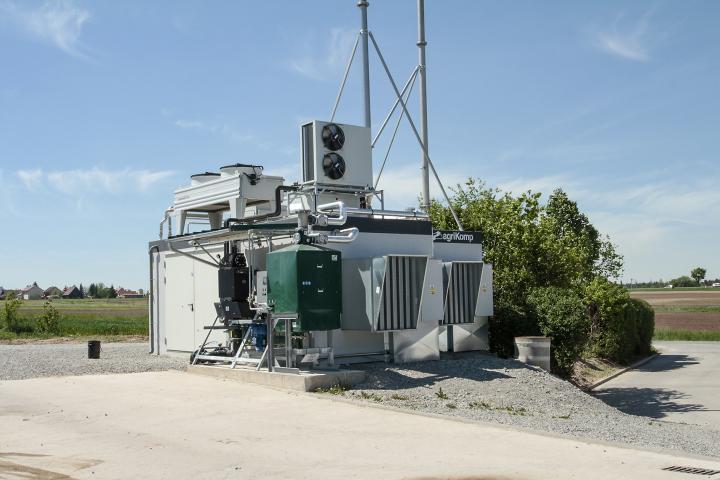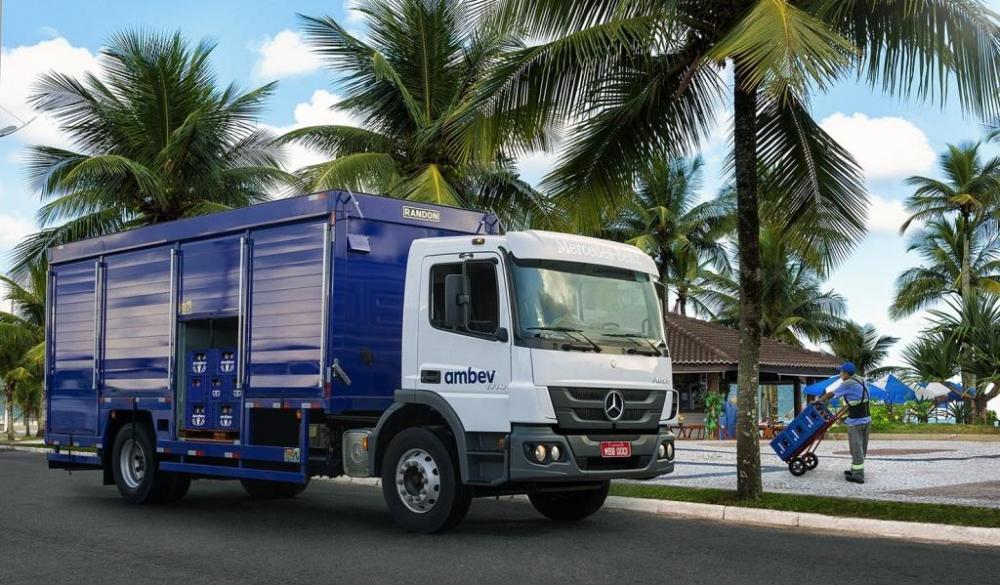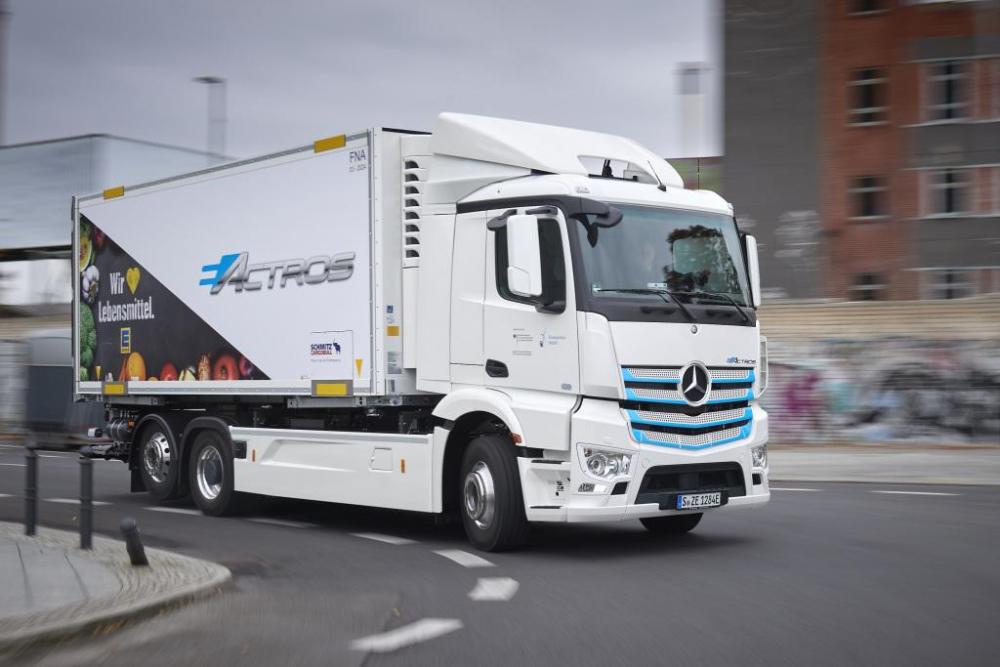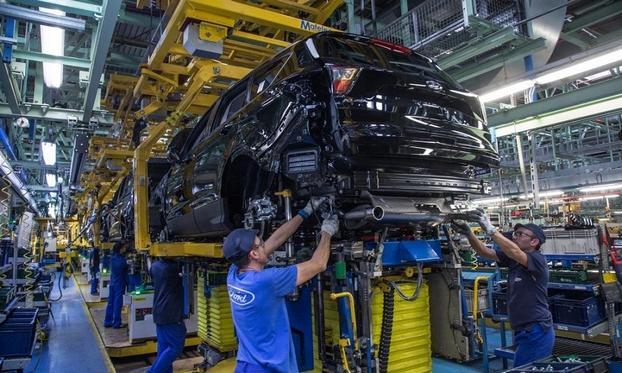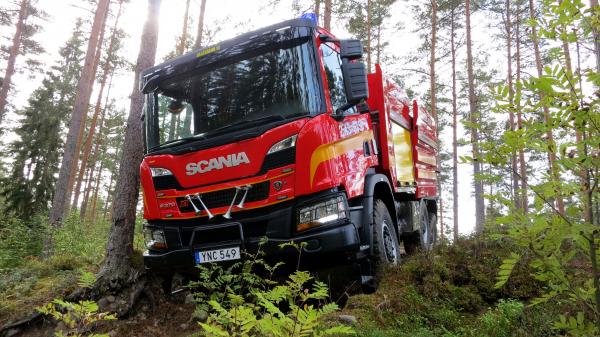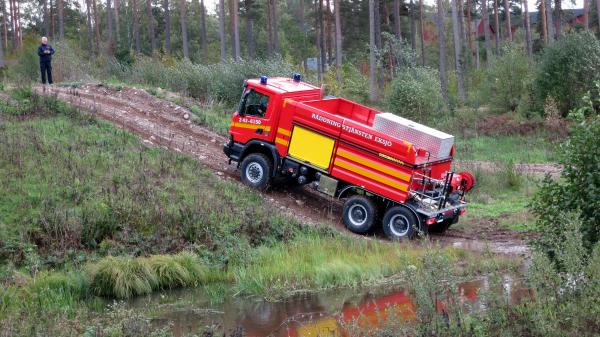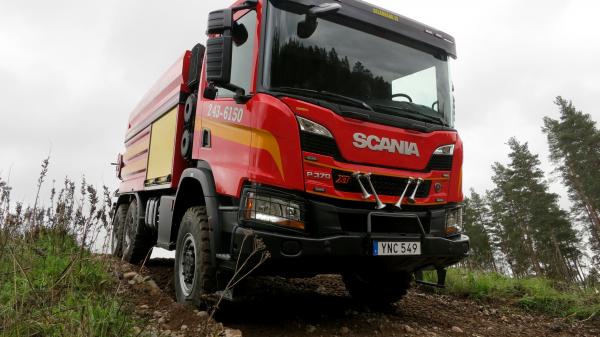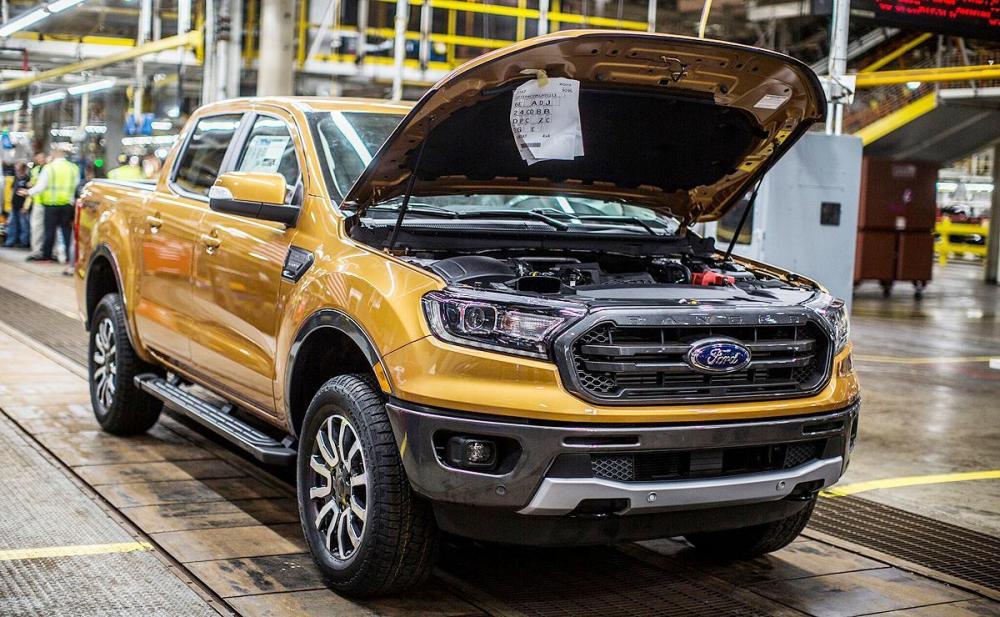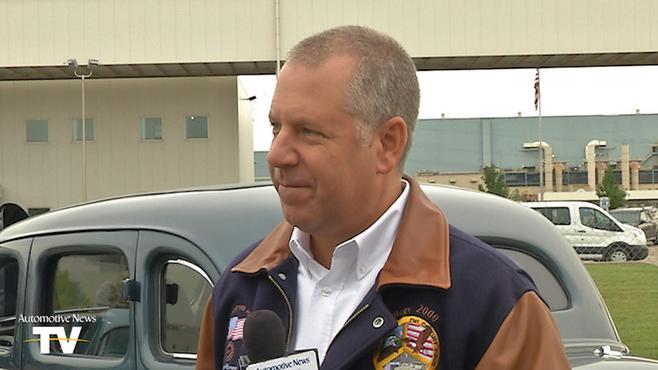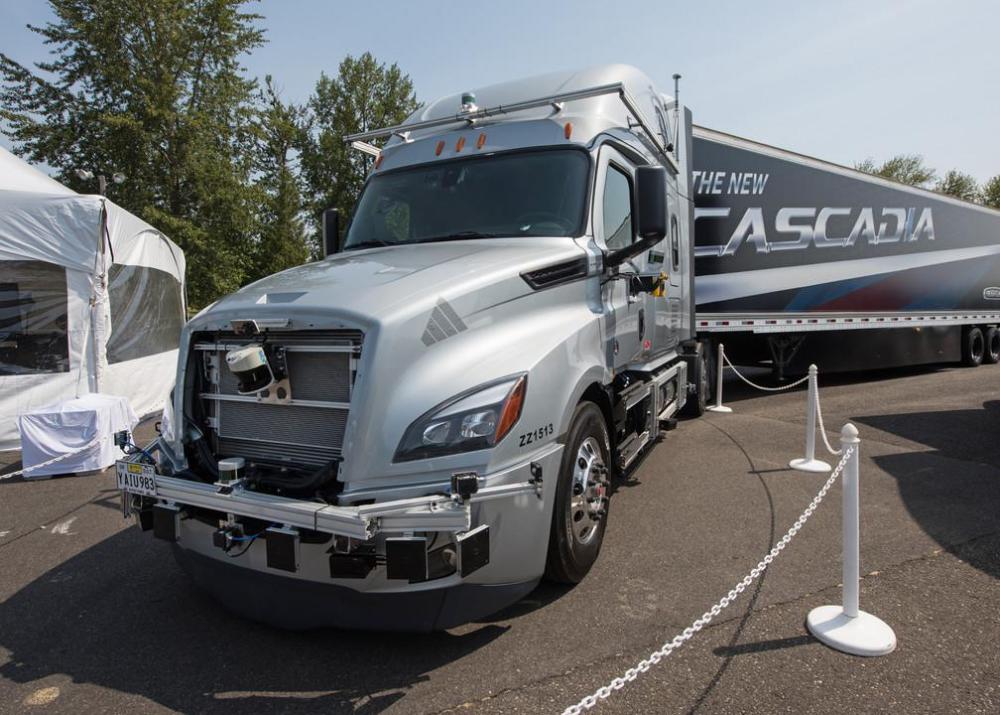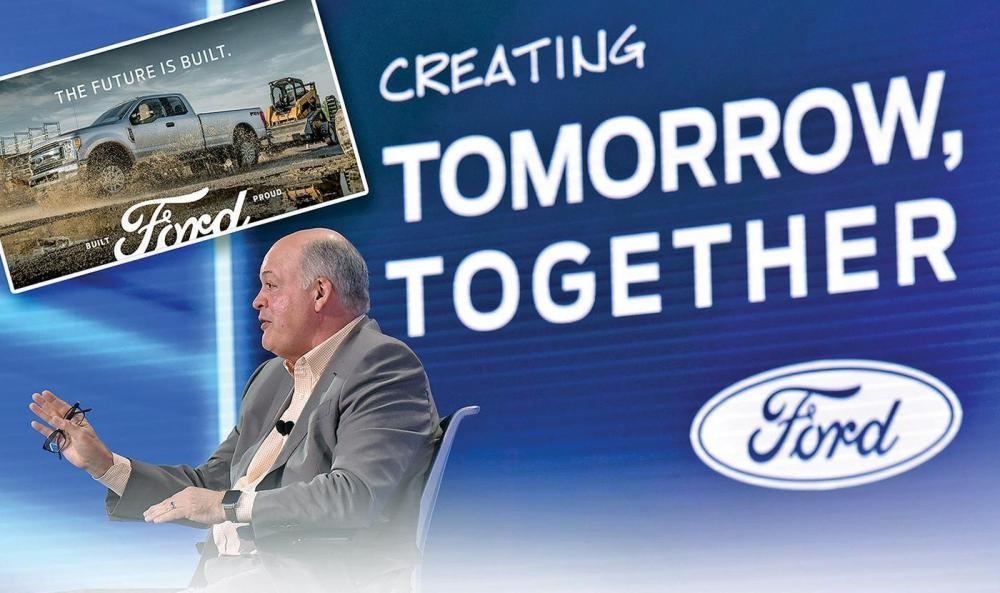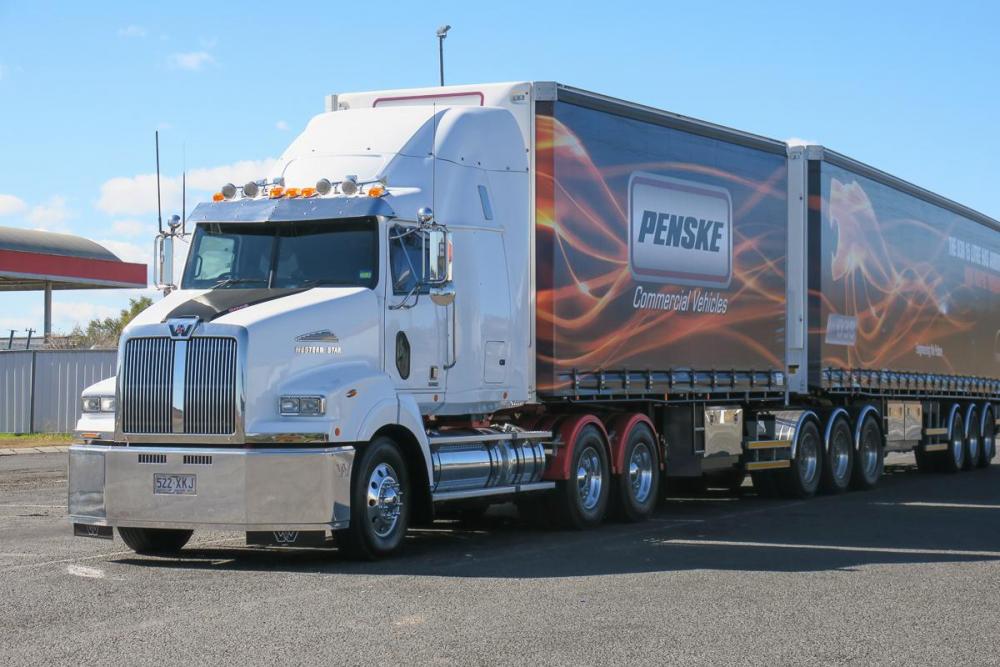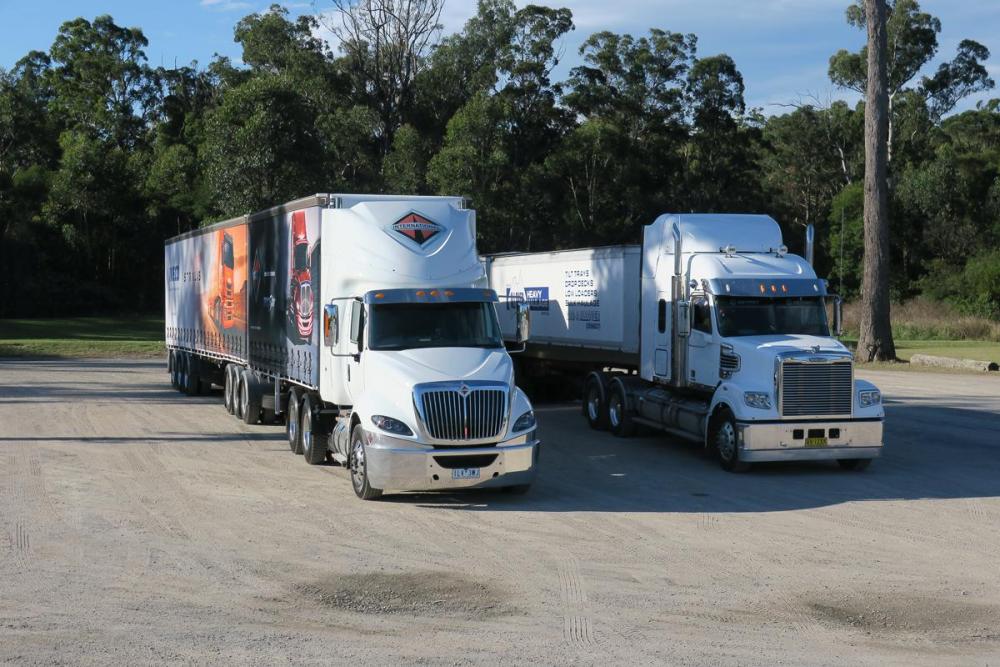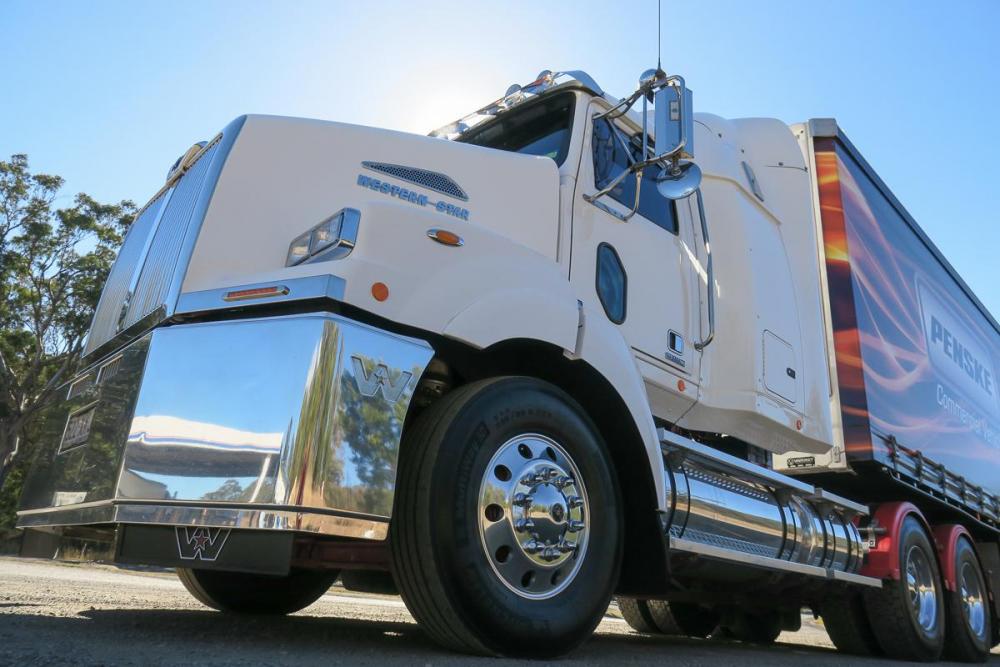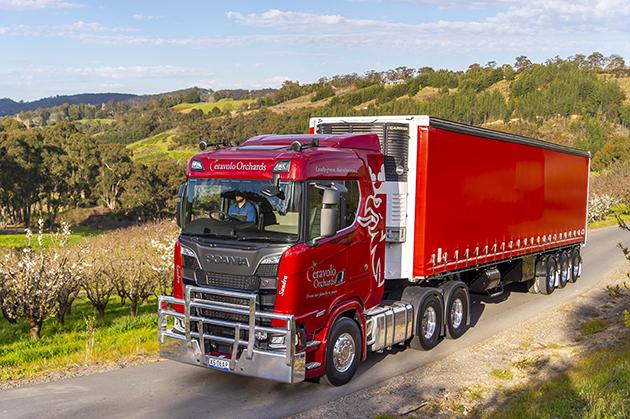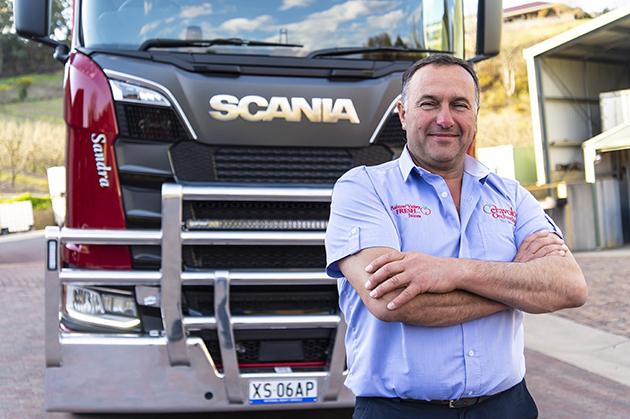
kscarbel2
Moderator-
Posts
18,550 -
Joined
-
Days Won
112
Content Type
Profiles
Forums
Gallery
Events
Blogs
BMT Wiki
Collections
Store
Everything posted by kscarbel2
-
Hendrickson Press Release / October 17, 2018 .
-
Scania Group Press Release / October 23, 2018 German farmers receive government incentives to make biogas out of their fresh cow dung. AgriKomp, a leading creator of renewable energy systems, is there to help them out, using Scania engines to power its biogas plants. In Germany, government incentives encourage the continuous development of small-scale, climate-friendly biogas power plants. Farmers are offered feed-in tariffs which are guaranteed for 20 years, for the production of electricity from biogas. AgriKomp is one of Germany’s leading developers of biogas power plants. It has constructed 550 renewable energy installations on farms around the country, and more than 850 worldwide. Power plants produce biogas The power plants are airtight to enable the anaerobic breakdown of organic material such as slurry, manure and residue from food and agricultural production. This in turn produces biogas. The biogas contains approximately 60 percent methane, 39 percent carbon dioxide and traces of other gases such as hydrogen, nitrogen and hydrogen sulphide. Before being fit for use, the gas is cleaned to remove condensate, hydrogen sulphide and other substances that are harmful to engines. The processed biogas is then used to run a Scania 13-litre industrial engine, which in turn powers a generator. The electricity from the generator is fed into the national grid. When upgraded to biomethane, biogas can also be used as fuel for vehicles or injected into the national gas grid. The heat generated warms up farm buildings and greenhouses, is sold via district heating networks to neighbours, or is used for industrial applications. It’s a win-win situation. “Biogas opens up various utilisation paths in many sectors including transport, heating and electricity,” says Gernot Buchta, Head of Marketing, AgriKomp Group. “It is storable and can be used when it is needed – for example, if there is a peak in electricity demand,” Buchta continues. “Biogas plants in flexible operating mode can help to close the demand gap and stabilise the grid. Our BGA-136 power unit with the Scania 13-litre engine is ideally suited to provide flexible energy production.” Since the mid-1990s, AgriKomp has been developing biogas systems for agricultural businesses and has implemented more than 850 so far. The total installed capacity of these systems is close to 250 MW. Some 400 employees run its network, including its headquarters in Germany, as well as branch offices and partners in the UK, Ireland, France, Switzerland, Italy, the Czech Republic, Poland and Slovakia. The company also runs projects in Canada, Kenya, Russia and China. Tailor-made solutions for clients worldwide For the pasttwo years AgriKomp has been using Scania’s 13-litre engine in its tailor-made solutions. “We scale it down to the required emissions limits and equip it with an oxidation catalyst,” explains Buchta. “There is no need to adjust anything else. The 13-litre fits with our output range [150 kW to 250 kW] and our efficiency requirements. It’s easy to handle, and spare parts and maintenance services are available worldwide,” he says. There are now plans to extend AgriKomp’s engine portfolio, with the inclusion of the Scania 9-litre in its product range in 2018, and the 16-litre in 2019. Scania is happy to help in this highly sustainable project. “Our work with AgriKomp has been a real success story,” says Jörg Franzke, Head of Engines Sales and Service at Scania Germany. “We started delivering 13-litre engines in 2016, and since then we have continuously grown together,” Franzke adds. “In this application our engines have a long life cycle of up to 40,000 hours or more, which makes them very attractive for use in power plants, so we hope to enjoy an even higher level of cooperation in the future.” Engine type • The Scania engines used for power generation are based on a robust design with a strength-optimised cylinder block containing wet cylinder liners that can easily be exchanged. Individual cylinder heads with four valves per cylinder promote reparability and fuel economy. • The Scania 13-litre engine: 150 to 250 kW continuous electric power at 1,500 r/min.
-
Daimler Press Release / October 24, 2018 São Bernardo do Campo – Brazil's largest brewery and drinks supplier Cervejaria Ambev is making major enlargements to its fleet and has chosen trucks with the three-pointed star. A total of 228 new Mercedes-Benz trucks – 212 Atego and 16 Actros models – will help to supply beer and beverages even more efficiently and safely to thirsty customers. The robust, manoeuvrable Mercedes-Benz Atego trucks are ideal for local distribution and will reliably serve retailers. The Mercedes-Benz Actros will provide long-distance transport between breweries and major logistics centres, ensuring Brazil's supermarkets don't run dry. The first vehicles were handed over to Ambev in September, and the other beer trucks will follow monthly until the end of the year. Part of the fleet will be equipped with Fleetboard, the innovative cargo managing system: this will save on operating costs and, at the same time, ensures that the driver and their freight arrive at the destination faster and safer. .
-
Daimler Press Release / October 23, 2018 Daily food delivery to EDEKA locations in Berlin Locally emission-free and quiet Daily route between 150 and 300 km Part of the eActros "innovation fleet" of a total of 10 vehicles Also present today for the handover to EDEKA: Rita Schwarzelühr-Sutter, Parliamentary State Secretary at the Federal Ministry for the Environment, Nature Conservation and Nuclear Safety Berlin – Mercedes-Benz Trucks today delivered a fully electric eActros for on-road testing to EDEKA. The German retail association will be testing a 25-tonne truck with refrigerated body for one year in Berlin, where it will be used to transport fresh, temperature-sensitive foodstuffs in Germany's capital. The daily route from the warehouse in Grünheide on the outskirts of Berlin to various EDEKA supermarket branches in the city centre and surrounding areas is between 150 and 300 km. The vehicle will operate in a double shift pattern. The weight of the transported goods can be up to 10 tonnes. During loading and unloading, the vehicle is charged to ensure that the total range of the eActros (up to 200 km with a single battery charge) is optimally utilised. EDEKA is the only company from the retail sector in Germany, which will use the eActros in its own fleet of vehicles. The symbolic handover of the vehicle to EDEKA took place at the Gasometer in the Berlin-Schöneberg district. In addition to representatives from Mercedes-Benz Trucks, EDEKA and truck body manufacturer Schmitz Cargobull, Rita Schwarzelühr-Sutter, Parliamentary State Secretary at the Federal Ministry for the Environment, Nature Conservation and Nuclear Safety, also took part in the event. Two-year test with 20 customers – series production starting in 2021 EDEKA is one of a group of 20 customers – all from various industries – that are now integrating the heavy-duty electric truck into their fleets. Each of these selected customers will put a near-series version of either the 18 or 25-tonne variant through its paces in real operations and will test the respective vehicle for its suitability for their daily field of work. The aim of Mercedes-Benz Trucks is to make emission-free and quiet driving a reality in cities from the year 2021, also with series heavy-duty trucks – and all of this as economically viable as with a diesel truck. The test series consists of two phases, each with ten customers and spanning a total of around two years. The development and testing of the heavy-duty electric truck in short-radius distribution operations is sponsored as part of the "Concept ELV²" project to varying degrees by the German Federal Ministry for the Environment (BMU) and the Federal Ministry for Economic Affairs and Energy (BMWi). EDEKA is making a valuable contribution ahead of the market launch Andreas von Wallfeld, Head of Marketing, Sales and Services for Mercedes-Benz Trucks: "We are delighted that EDEKA – a long-standing customer – is now also testing the eActros. Thanks to their practical deployment of the eActros, EDEKA is making a valuable contribution to the truck's further development ahead of its market launch. It goes without saying that we are very thankful to the retail association for their active support. Our previous results from numerous tests have been nothing less than very positive. The 200 km range, for example, is totally realistic, and the cooling and air-conditioning systems have performed well, even during this year's record-hot summer." "We would also like to thank the German Federal Ministry for the Environment and the Federal Ministry for Economic Affairs and Energy for their support in developing and testing our eActros fleet as part of the funding project," continues Wallfeld. Future technologies play a key role for EDEKA EDEKA itself is also eagerly awaiting the results of the on-road testing: "Being involved with future technologies plays a key role for EDEKA as a driver of innovation in the retail sector," affirms Rolf Lange, Head of Corporate Communications at EDEKA's Hamburg headquarters. "We are already committed to reducing emissions in many areas – particularly when it comes to logistics. This is where electric mobility comes in as it presents many opportunities but also poses several challenges. We look forward to gaining valuable experience with this on-road test in Berlin." Removable container with electric cooling unit from Schmitz Cargobull The removable container on the eActros used by EDEKA is the "W.KO COOL" model supplied by Schmitz Cargobull. It has optimum insulation for energy-efficient transport of refrigerated goods. This robust body is ideally suited for intensive day-to-day use. Cooled entirely by electricity, the cooling unit is totally emission-free and is specially designed for use in distribution transport. "Electric mobility for commercial vehicles is a highly significant topic that opens up new opportunities. We will utilize them with our refrigerated unit. We can gain valuable experience on the critical factor of shared energy management between the truck and cooling unit through joint testing with Mercedes-Benz Trucks," says Boris Billich, Member of the Board of Management for Sales at Schmitz Cargobull. eActros replaces conventional diesel-powered trucks The first eActros of the "innovation fleet" has been in service at a customer since September. The rest of the first phase of vehicle hand-overs will be completed by the end of the year. All test customers operate in short-radius distribution and use the eActros for tasks which would otherwise be carried out by conventional diesel vehicles – the customers cover a broad spectrum of different sectors and categories. The palette ranges from food to building and industrial materials. The bodies vary from refrigeration units to dry containers, silos or tarpaulin-covered units. The eActros: architecture based entirely on electric drive The eActros is based on the frame of the Mercedes-Benz Actros. Also, the eActros means architecture based entirely on electric drive with a large proportion of specific parts. For example, the drive axle is based on the ZF AVE 130, which has proved its worth in hybrid and fuel cell buses from Mercedes-Benz and has now undergone a major modification for the eActros. The drive comes from two electric motors near the wheel hubs on the rear axle. Their output is 126 kW each, and the maximum torque is 485 Nm each. Downstream of the transmission that is 11 000 Nm each. The driving output is therefore on a level with a diesel truck. The maximal permitted axle load is the usual 11.5 tonnes. The energy is stored in lithium-ion batteries with a capacity of 240 kWh. Depending on the available charge, fully charging takes between two and eleven hours (at 150 or 20 kW). Daimler commercial vehicles with an extensive electric portfolio Daimler has had experience of working with electric trucks since 2010 and since last year its first fully electric series production truck has been on the market and used by customers: the lightweight Fuso eCanter truck. In the bus sector, the first Mercedes-Benz eCitaro will be delivered from the end of the year and will go into operation in so-called customer-related test-driving. In the van sector, the eVito from Mercedes-Benz Vans has been available for pre-ordering since November 2017 and the first deliveries are due very soon. In 2019 the eSprinter will follow. The vehicles from Daimler Trucks, Daimler Buses and Mercedes-Benz Vans thus cover the entire range of urban traffic with electric vehicles. . .
-
DAF Trucks Press Release / October 24, 2018 "We are getting 7.2% better fuel economy than the previous model, so we are very, very happy!" .
-
Paccar (PCAR) today set a new 52-week low of $54.87, despite a 35 percent increase in net income. Volume was two and a half times normal.
-
Ford will halt production Spain for nine days due to low demand Reuters / October 23, 2018 MADRID -- Ford will stop car production in its plant in [Valencia] Spain for nine days during November due to a lower demand for its vehicles. Engine production will also be halted for 13 days next month, a company spokesman said. Part of the Spanish production of Ford engines is sent to Canada for assembly of its Edge model. The latest production shut down comes after a three-day halt in October. Ford employs some 7,500 workers at the plant in Almussafes near Valencia. The factory builds about 1,840 cars a day. The vehicles produced are the Mondeo midsize car, S-Max and Galaxy large minivans, Kuga SUV, Tourneo Connect van and Transit Connect van. .
-
Ford appoints new China CEO, elevates China to stand-alone unit Automotive News & Reuters / October 23, 2018 Ford Motor Co said late Tuesday it appointed a new head of its China operations to help turn around flagging sales in the world's largest auto market and fill a post vacated when the firm's previous China head abruptly stepped down in January. The U.S. carmaker said in a statement that Anning Chen, a former Ford executive with 25 years of industry experience, would become the new CEO and president of Ford China. The move is effective Nov. 1. Ford China would also be elevated to become a stand-alone business unit, reporting directly to global headquarters. Chen previously served as CEO, Chery Automobile Ltd., and was chairman of the board at Chery Jaguar Land Rover, Automotive, China. In the statement, Ford also announced: Plans to increase local production for Ford and Lincoln; Details on significant investments in China-led engineering and r&d; The creation of a new single sales and service channel; A new joint venture with Zotye for a new line of small battery-electric vehicles; A strategic alliances with Baidu and Alibaba to explore areas of cooperation in AI, connectivity and digital marketing. .
-
The Dow is down 550 points this morning. There is a distinct possibility that this is the prelude to a global market crash alike 2008.
-
Speaking of the widely shunned “Davos in the Desert” Saudi investment conference in Riyadh that Bill Ford will not attend, hackers took over the main website and placed an image of the Saudi-murdered Khashoggi on the home page.
-
Scania Group Press Release / October 22, 2018 Scania’s fire tanker truck set to combat forest blazes. The worst-ever forest fires that raged in Sweden this past summer have highlighted the need for fire fighting vehicles that can manoeuvre in rough terrain. The Eksjö Rescue Services in southern Sweden have recently taken delivery of a Scania XT P 370 fire tanker truck expressly designed for operations in dense forests. VIDEO: Click here to watch the fire truck in action Built on a standard XT 6×6 chassis, the durable truck features a water tank with the capacity to hold 6,000 litres. “What distinguishes this truck is the flexible attachment between the frame and body in order to cope with the uneven movement in terrain,” says Johan Sand at the Atteviks Scania dealership. “With a rigid attachment, the tanks might crack. It has also been equipped with heavy-duty threaded off-road terrain tyres.” Versatile army veteran The Eksjö rescue services previously had an ex-army Saab-Scania SBAT 111S 6×6 tactical truck – the acronym for Special Bulldog Allwheeldrive Tandem – from 1976, first on loan and subsequently donated by the armed forces. “That was a really great truck in terrain but it was dated after 42 years and spares were increasingly difficult to obtain,” says Micael Carlsson, Head of the Eksjö Rescue Services. Carlsson’s aim was to replace the vintage truck with a modern fire fighter. “However, we didn’t have the budget for a customised vehicle and were looking at meeting our requirements using off-the-shelf components.” Following discussions with the Scania dealership, a special-order chassis was designed using standard components with bodywork by Sala Brand. “We’ve not yet actively used the vehicle but our staff has trained with the new truck,” says Carlsson. “It performs almost as well as the SBAT with another level of comfort and safety.” Handling with care The Eksjö area was luckily spared from forest fires last summer but the firefighting crews were kept busy in neighbouring areas and in battling major fires elsewhere. “We stand ready to assist others with firefighting resources but I don’t think that we’ll be taking the truck on the road; with these tyres, it a bit unsteady on tarmac. Besides, we need to take more care when handling this truck. A few more scratches here and there on the army truck really was of no concern.” The Scania XT truck seats two but the Eksjö Rescue Services have other personnel carriers for crews. “The real advantage is not having to pull hose as far when establishing firebreaks.” “Considering payload, we could have built larger volume tanks but that would have adversely affected manoeuvrability in terrain. And 6,000 litres are normally adequate when spraying for firebreaks, usually using no more than 100 litres per minute.” .
-
Ford Ranger won't cannibalize F-150 sales, Hinrichs says Michael Martinez, Automotive News / October 22, 2018 DETROIT — Ford Motor Co. doesn't believe the midsize Ranger will steal much business from its profit-generating full-size F-series trucks when the smaller pickup returns to North American showrooms early next year. "There always will be some substitution, but this is more of a lifestyle vehicle for people who want to use it for different purposes," Joe Hinrichs, Ford's president of global operations, said Monday at an event celebrating the Ranger's expected start of production here next week. "The F-150's gotten bigger over time and more expensive. We believe there's room now to slot the Ranger in very nicely in the showroom." Hinrichs said the first Rangers should be available to buyers in January 2019. Ford recently retooled its Michigan Assembly Plant in the Detroit suburb of Wayne, Mich., to build the pickup and, in 2020, the resurrected Bronco SUV. Some workers in the body, paint and stamping sections of the plant have already returned to work. Final-assembly workers will return next week, Ford said. The revived Ranger will start at $25,895, including shipping, and will top out at more than $40,000. That's about the same as the segment-leading Toyota Tacoma, which starts at $25,400 for 2018 models, but more than the Chevrolet Colorado and GMC Canyon. Pricing on the 2019 Colorado starts at $21,495, while the 2019 Canyon starts at $23,095. The Ranger's turbocharged 2.3-liter four-cylinder engine will be able to tow and haul more than the V-6 gasoline offerings from its rivals, Ford says. It will come in three trim levels: XL, XLT and Lariat. Ford will sell two-door SuperCab and four-door SuperCrew configurations and offer two-wheel drive and four-wheel drive for each configuration. An off-road FX4 package will be offered on all 4wd models. The Ranger was discontinued in the U.S. in 2011 but has continued to sell in a number of overseas markets. The latest U.S. version, to be built at Ford's Michigan Assembly Plant, has a mostly steel body, axles made by Dana Inc. -- which supplies the Jeep Wrangler -- and an exterior design similar to its larger F-series counterparts. The previous U.S. Ranger was regularly among the segment's top sellers, including No. 1 as recently as 2004. Ranger sales routinely totaled more than 300,000 a year in the 1990s before fading in the early 2000s. However, interest in the midsize pickup segment has rebounded. It's up 18 percent so far this year after rising less than 1 percent in 2017. "We're very excited about the growth we're seeing in the midsize segment," Hinrichs said. "We believe bringing back the Ford Ranger will add to that excitement and get more interest in that segment." .
-
Ford's Hinrichs says Trump tariffs make U.S. steel costliest in the world Keith Naughton & Joe Deaux, Bloomberg / October 22, 2018 ETROIT -- Ford Motor Co. is escalating its criticism of the Trump administration’s metals tariffs that the company has already said took a $1 billion bite out of profit. “U.S. steel costs are more than anywhere else in the world,” Joe Hinrichs, Ford’s president of global operations, said Monday at an event marking the start of Ranger pickup production at a factory west of Detroit. He added that Ford is talking to the administration about the tariffs. “We tell them that we need to have competitive costs in our market in order to compete around the world.” Ford CEO Jim Hackett last month called on President Donald Trump’s administration to resolve trade disputes quickly, warning that it would otherwise do “more damage” to the second-largest American automaker. He said the company sustained the roughly $1 billion hit to profit despite the fact that it sources most of the materials from the U.S. Domestic hot-rolled coil -- the benchmark price for American-made steel -- has gained 28 percent in 2018 as the Trump administration implemented tariffs on imports. The levies helped push the price to about $920 a metric ton earlier this year, the highest in a decade. U.S. steel currently costs about $150 more per metric ton than steel in China, the world’s biggest consumer, which accounts for more than half of global demand. .
-
Navistar Press Release / October 22, 2018 LISLE, Ill.-- Navistar has launched the Navistar Service Essentials Program, a partnership program designed to help qualified technical schools prepare the next generation of truck and bus technicians. "As we focus on growing customer Uptime, Navistar and our International Truck and IC Bus dealers are all committed to combating the industry's growing technician shortage," said Michael Cancelliere, Navistar president, Truck and Parts. "The new Navistar Service Essentials Program provides software and other solutions that will enhance the learning experience and attract additional students." The program's offerings include a wide array of interactive training courses and software solutions that cover engine diagnostics, vehicle health reports, electrical systems and control module programming. The program also provides access to informational tools related to parts and service. The Navistar Service Essentials Program is being made available to technical schools that partner with International Truck or IC Bus dealers. "We believe that students benefit the most when their technical schools have partnerships in place with dealers who are focused on driving Uptime every day," Cancelliere said. "That's why Navistar, our dealers and technical schools are establishing a three-way partnership committed to back up this new program with real-world, practical experience. This approach will accelerate progress and put more students on a path to enter this vibrant and essential technology profession." For an application or more information, technical schools can contact Navistar at oncommandsubscriptions@navistar.com or by calling 1-800-336-4500, option 4.4. For information on vocational school accreditation, please visit aseeducation.org/.
-
Nick Carey, Reuters / October 22, 2018 Tesla CEO Elon Musk put electric heavy commercial trucks on the map in November 2017 when he unveiled the company’s futuristic, battery-powered Semi, booked hundreds of orders and said he would start delivering the vehicles by 2019. Now, it looks like 2020 could be the big year for electric big rigs. Incumbent truck makers are accelerating their electric truck projects toward launches that year, while Musk told investors in June production of the eye-catching Semi freight hauler should begin “basically (in the) first half of 2020” instead of 2019. Driven by regulatory pressure to cut diesel pollution, commercial truck makers have made a flurry of fresh announcements to deliver battery electric or hydrogen-fueled vehicles. They have landed orders from big fleet operators such as Walmart, United Parcel Service (UPS) and Anheuser Busch Inbev NV. The challenge is gauging how big the market for electric commercial trucks will be, especially outside of China. The limited range of most first-generation electric or hydrogen commercial trucks and a lack of charging infrastructure threaten to limit sales to short-haul operations. In China, regulators are considering a long-term plan to replace 1 million diesel big rigs with cleaner trucks, including electric models, and some Chinese ports and cities are banning diesel trucks, which could [will] significantly boost sales. In the United States, the outlook for electric truck demand is cloudier. Some analysts estimate that by the mid-2020s, U.S. annual electric truck sales may number only in the hundreds. Over the last 12 months, North American diesel and so-called semitruck orders totaled 497,000 units. Toyota’s experience at the Ports of Los Angeles and Long Beach illustrates the potential, and the problems for clean truck technology. The first of Toyota’s working hydrogen fuel-cell trucks was designed with a 200-mile (322 km) range for daily operations and has already logged more than 10,000 miles running short routes around the ports. The newer second iteration has a 300-mile range but that is still well short of the 1,000 miles or more diesel trucks can run between refueling stops. Toyota has not provided a production timeline, but executive program manager Chris Rovik said “so far we feel confident the technology is absolutely applicable to this type of use case.” Fueling infrastructure is a major headache for electric and hydrogen trucks. Hyundai commercial vehicle director Mark Freymueller describes a chicken-and-egg problem: Trucking companies are reluctant to buy trucks without fueling stations, but fuel station operators will not install them without trucking customers. Battery electric trucks can take hours to recharge and charging stations are scarce in most U.S. states. Hydrogen trucks can be refueled in about the same time as a diesel truck - but hydrogen refueling stations are even rarer, with most concentrated in California. “Fueling infrastructure is a very important first step,” said Chris Cannon, chief sustainability officer for the Port of Los Angeles. “The trucks may work great, but if they can’t get any fuel they can’t operate.” Last month, the California Air Resources Board (CARB) announced $41 million in grants to the port toward building 10 new hydrogen fuel-cell electric trucks to be developed by Toyota and Paccar unit Kenworth. The grant will also partly-fund two new hydrogen fuel stations to be built by Royal Dutch Shell Plc. Most manufacturers see short-haul routes such as drayage services to or from ports or rail yards as likely first adopters of electric or hydrogen trucks. “We think the first applications are going to be shorter haul,” said Denny Mooney, Navistar International’s vice president of engineering. “We’re going to start out where the business makes sense.” Tesla customers like Deutsche Post unit DHL, which has ordered 10 Semis, say they could save tens of thousands of dollars on maintenance and fuel annually. CEO Musk says the Semi’s range could hit 600 miles. But a spokesperson said running uphill with air conditioning on or running other appliances would cut that range. Many modern 18-wheelers contain televisions, fridges and other appliances. Package delivery giant UPS has pre-ordered 125 Tesla Semis and will use them on daily routes hauling packages between hubs and on UPS Freight routes between businesses - mostly shorter routes. “In many ways we are ideally suited to be an early adopter of this technology because we don’t have much long-haul business,” said UPS spokesman Glenn Zaccara. Tesla is working with potential customers including UPS, Pepsico and Anheuser-Busch to build charging stations at their facilities. Nikola Motor Co, a startup offering a fuel cell truck, has ambitious multibillion-dollar plans to build 700 U.S. hydrogen fueling stations over the next decade, starting along the major routes of Anheuser-Busch, which has ordered up to 800 trucks, says CEO Trevor Milton. Nikola has secured funding for those stations, he said.
-
Roger Nielsen, President and CEO - Daimler Trucks North America (DTNA) / September 21, 2018 At DTNA, along with our recent advancements in e-mobility and connected services, we’re also focusing on automated driving, an important third pillar of our technology strategy. Soon, we’ll be expanding our team and facilities by opening a new Automated Truck Research & Development Center in Portland, Oregon, near our headquarters. Here’s a quick look at our ongoing, expanding efforts into the leading edges of automated vehicle technology. If you have an engineering background and a desire to change to world with innovative new technology, send a resume and letter of interest to innovateDTNA@daimler.com, but here’s more. With heavy investments in both our new Automated Truck R&D Center in Portland, Oregon and our High Desert Proving Grounds in Madras, Oregon, we’re creating global hotspots of emerging technologies and innovation, zeroing-in on freight efficiency, safety, and driver experience. Our engineers in North America collaborate closely with colleagues around the world at Daimler Trucks locations in Stuttgart, Germany and Bangalore, India to form a global network of hundreds of engineers devoted to advancing automated driving technology. We leverage this depth and breadth of experience across Daimler’s vehicle divisions to include both commercial vehicles and passenger cars. As we make progress with automated trucks, we’ve been testing them on our state-of-the-art test tracks and on Oregon highways. In June, we demonstrated automated driving through vehicle pairing, incorporating advanced, vehicle-to-vehicle communications between two trucks and showcasing our high-tech safety systems. Paired vehicles essentially 'talk' to each other, collecting information such as position, speed, and braking status 50 times every second. As a result, trucks in an automated pair can respond to each other in coordinated fashion, much faster than a human. This allows the vehicles to travel safely at a close following distance, thereby reducing fuel consumption. To help us prepare for new levels of automation, our Data Collection Truck (pictured above) aggregates immense troves of real-world data from a range of sensors. Dozens of test runs have provided a wealth of data that help us adapt as we move forward with our typical, micron-level attention to detail. We’re not just developing technology for technology’s sake, though. Our new Automated Truck R&D Center is a hub for co-creation where customers, suppliers, and business partners alike can provide input that deepens our understanding of how this technology can help our customers increase their profitability. Our eyes are on the bottom-line impact—not just for our customers, but for society at large. That means safety and reliability come first, as always, and automated driving systems are no exception. Drivers remain at the center of any new development – even of a truck featuring highly automated driving technology. The opinion that the technology will not replace drivers was further validated by findings from a recent study, Preparing the Workforce for Automated Vehicles, conducted by the American Center for Mobility—a non-profit testing and product-development facility for future mobility. We’re not going it alone, either. We’re collaborating with other industry experts to help ensure that we’re at the forefront of the discussion of how the advancement of automated vehicles will impact safety, quality of life, and economic opportunity. Daimler has teamed up with the American Trucking Associations, FedEx, Toyota, Ford, Uber, Waymo, and Lyft to found the Partnership for Transportation Innovation & Opportunity (PTIO). Committed to collaborating with American workers, policy makers, and customers to find solutions through the common-sense adoption of automated driving technology, PTIO creates a powerful alliance for collaboration on the future of automated vehicles. Only through examining, listening and understanding potentially disruptive new technology from every angle can we remain responsible global stewards, as we develop and commercialize groundbreaking new tech. .
-
Hackett is sweating.
-
Amid unease, dealers get clearest look yet at Ford's restructuring plan Michael Martinez, Automotive News / October 22, 2018 LAS VEGAS — The last time Jim Farley stepped into the Bellagio hotel's Grand Ballroom to address a national meeting of dealers here, Ford Motor Co. was on the brink of crisis. It was April 2008, six months after Ford had lured Farley from Toyota to help it steer through a steep downturn. A decade later, Farley was in the same room, again addressing an uneasy retail network questioning Ford's future. "It's a comeback story, but it's a different comeback story," Farley said. "We just happen to have a lot more money in the bank, but we want it just as bad. We want to be the best." Ford also has an abundance of skeptics, including Wall Street analysts, anxious employees and some of the dealers it spent last week working to reassure. It has even started to see customer loyalty, a longtime strength of the Ford brand, dip slightly, prompting a newfound marketing focus on retention instead of conquesting. Ford used this year's annual dealer gathering to offer the clearest look to date at its plan under CEO Jim Hackett and to rally its retail body with an emotional appeal. It vowed to freshen showrooms through shorter product development cycles and revealed plans to add affordable nonsedan models to the lineup, alter vehicle allocations to raise profit margins and launch an edgy advertising campaign that plays up the company's history. Ford is trying to psych up its North American dealer body as it begins a difficult $11 billion global restructuring that will stretch into the next decade. While North American margins may be improving, Ford is losing money in key markets including China, Europe and South America and has indicated it plans to overhaul its operations in those countries. It's expected to post a decline in third-quarter earnings on Wednesday, Oct. 24. Leadership team turns out Ford has struggled to explain Hackett's vision for the company, and analysts have openly questioned his grasp of the business. Just three years removed from record profits, Ford's stock price has sunk to a nearly nine-year low — the shares, worth $11.10 on Hackett's first day as CEO, fell under $8.50 last week — and its North American product portfolio has grown largely stale. Morgan Stanley analyst Adam Jonas last week downgraded his rating of Ford and said the company's dividend, a significant incentive for longtime stockholders, is again at risk. The national dealer meeting is held every year, but often on a smaller scale with just a few executives. This year, virtually the entire Ford senior leadership team was there, including Hackett, who has acknowledged being not being visible enough to dealers in his first 17 months on the job. "This is the first time I'm aware of where he took the time — 20, 25 minutes on stage — and really gave an outlook of where he's been," said Mike Pallotta, owner of Pallotta Ford-Lincoln in Wooster, Ohio. "It was great to hear the message directly from him." One of the dealer body's biggest concerns has been a lack of clarity on Ford's product strategy. Executives faced backlash this year when they announced they would discontinue virtually all of Ford's sedans in North America, offering only a vague promise of adding "white space" silhouettes. Dealers questioned whether Ford would abandon entry-level sedan buyers to General Motors, Toyota and other rivals. Ford showed dealers vehicles arriving in the next few years and explained how the total number of nameplates in 2023 would be three more than today. Farley, Ford's president of global markets, vowed to offer several vehicles in the entry-level, $25,000-and-under price point. "When you look at the showroom lineup, that's what really excites us," said J.P. Miller, chairman of the Ford National Dealer Council and owner of Paul Miller Ford in Lexington, Ky. "The vibe I got is that dealers are really excited that the showroom of the future is coming a lot faster, and Ford's commitment to keeping that showroom fresh." There was one notable exception to the future product showcase: the Bronco. Farley promised to show dealers "a Bronco" but only flashed a photo of his own classic 1973 SUV. Despite a lack of fresh products in showrooms today, executives have been working to bolster Ford's North American profit margins by more closely examining individual vehicle lines during a daylong series of meetings every Wednesday. Kumar Galhotra, president of North America, transformed one floor of Ford's headquarters to create 13 "franchise rooms," each dedicated to a specific nameplate. Farley said one of the biggest discoveries is how profit margin varies on a specific vehicle from region to region. Ford has started to allocate more inventory to the areas of the country where it can make the best returns. "If you start to see our North America margins go up, we have no new product this year, and it's not coming from the market," Farley said. "It's controllable within our company." Less conquesting Among the biggest changes Ford communicated for the first time was a pivot from focusing on conquesting customers from other brands to retaining loyal buyers. The automaker plans to center its marketing efforts on keeping customers in the fold, communicating with them more often through connected vehicles and offering perks through a new rewards program on its FordPass app. "When we did all the data analytics, it became really clear, a loyal owner is so much easier for us to do business with than trying to get a customer from someone else," Farley said. "It was a big 'aha' moment for us." Ford traditionally has had the strongest customer loyalty in the industry, although that number has dipped slightly through July this year to 63 percent, according to data from IHS Markit. One area in which Ford can target its consumer base: the 13.5 million trucks owned in the U.S. Ford plans to build upon those numbers with a new loyalty program in the U.S. next year. Ford declined to provide details but said customers can earn points to redeem for meaningful rewards and that the program was fashioned after studying brands such as Delta, Starbucks and Toyota. The plan also involves more post-purchase interaction with customers through connected modems, which Ford plans to have on all its nameplates within the next few years. The automaker wants to offer unique experiences, similar to how its Lincoln luxury brand has built a niche with features such as standard pickup and delivery and chauffeur services. "There's so much choice in our industry now, and there's so much great product," Farley said. "We really believe now, when you look at the new technology enablers, the next opportunity is to build a much more frequent relationship with the customer." 'Inside the Oval' Dealers started the meetings, called "Inside the Oval," with a series of hands-on experiences at the Las Vegas Motor Speedway. They were among the first to drive preproduction models of the Ranger midsize pickup through an off-road course and to demonstrate its ability on rough terrain. They took hot laps in Mustang Bullitts, drove the Edge ST, saw the new Police Interceptor hybrid based on the next-generation Explorer, toured new configurations of the Transit and Transit Connect vans and experienced demonstrations of products such as FordPass, B&O sound systems and Ford's telematics service for fleet customers. They were among the first to see about 150 parts and accessories for the Ranger offered through a new partnership with Yakima. And they could enter their name to win rides in the GT supercar. Back at the Bellagio, they met with Ford executives in various conference rooms plastered with messages from the automaker's new "Built Ford Proud" ad campaign. One wall featured the Bullitt with the phrase "Never on Autopilot," while another showed a sprawling manufacturing plant with the words "Small batches should be reserved for whiskey." Dealers also glimpsed a number of TV commercials that were to begin airing Saturday, Oct. 20. The meeting concluded with an emotional call to action from actor Bryan Cranston, the "Breaking Bad" actor who stars in the new commercials. "It's time to bring swagger back to the Ford Motor Company," Cranston said in a voice-over played amid shots of the company's products. "It's time to have pride in who we are and what we do. It's time the whole world knows how proud we are of our family name, and it's time we take pride in the vehicles we make, of the future we will shape and of the responsibilities we will take." .
-
The United States Permanent Representative to NATO, Ambassador Kay Bailey Hutchison, warned Tuesday that the US could "take out" Russian missiles that are perceived to be in violation of the Intermediate-Range Nuclear Forces Treaty should Moscow continue to violate the agreement. "We have been trying to send a message to Russia for several years that we know they are violating the treaty. We have shown Russia the evidence that we have, that they are violating the treaty," Hutchison said. "They are building a medium-range ballistic missile in violation of the INF. That is a fact which we have proven," she added. [How about sharing that proof with your boss, the American people, before you start a war?] Hutchison said "the countermeasures would be to take out the missiles that are in development by Russia in violation of the treaty." "Getting them to withdraw would be our choice, of course. But I think the question was what would you do if this continues to a point where we know that they are capable of delivering. And at that point we would then be looking at a capability to take out a missile that could hit any of our countries in Europe and hit America in Alaska," she added. Later on Tuesday, Hutchinson said she "was not talking about preemptively striking Russia" when she said the US would have to "take out" the Russian missiles [Yes, she obviously was]. "I was not talking about preemptively striking Russia [Yes, that's exactly what you indicated]. My point: (Russia) needs to return to INF Treaty compliance or we will need to match its capabilities to protect US & NATO interests. The current situation, with (Russia) in blatant violation, is untenable," said Hutchinson. Prior to Hutchison's statement, Russia's Foreign Ministry spokeswoman Maria Zakharova said Hutchison behaved "aggressively and destructively" by making the comments. "It seems as if people who make such statements do not realize the level of their responsibility and the danger of such aggressive rhetoric," Zakharova said. "Who authorized this lady to make such statements? The American people? Do the ordinary people in the USA know what the so-called diplomats, who are getting paid with the money from [ordinary people's] pockets, behave themselves so aggressively and destructively?" Zakharova added [No, the American people don’t know]. "It is very easy to break and crush everything. It is hard to repair and restore. US diplomacy will have to do a lot in order to fix the aftermath of their mistakes. As for the essence of the matter, our military experts will give an expanded response," she added. --------------------------------------------------------------------------------------------------------------------------------------------------------------------------- In absence of a war, the woman is babbling about attacking another sovereign country? She obviously doesn’t realize the ramifications of what she said. This is what happens when our government appoints totally unqualified people. Who is Kay Bailey Hutchison? Kay Bailey Hutchison is an American attorney, television correspondent, politician, and [alleged] diplomat.She was a Republican Senator for Texas from 1993 to 2013. She has a Bachelor of Arts degree from the University of Texas at Austin. Born in Galveston, Texas, Hutchison is a graduate of the University of Texas at Austin. Prior to entering politics, she was an attorney and legal correspondent at KPRC-TV in Houston. She was a member of the Texas House of Representatives from 1972 to 1976. In 1990 when she was elected Texas State Treasurer. In 1993, she was elected to the United States Senate. After being reelected to the Senate in 1994, 2000, and 2006, Hutchison was an unsuccessful candidate for Governor of Texas in 2010. In 2013, she joined the law firm Bracewell & Giuliani. On June 29, 2017, Hutchison was nominated by President Trump to be the next United States Permanent Representative to NATO.
-
BMT...........Simply the best knowledge base for truck information the world over.
-
Freightliner Columbia 112 Vocational Twin-Steer
kscarbel2 replied to kscarbel2's topic in Trucking News
-
-
Diesel News Australia / October 2018 The short BBC conventional B-double prime mover market is dominated by Kenworth, especially with the T610 arriving, but there are other conventional contenders in this segment. Diesel looks at two of these, the International ProStar and the Western Star 5800FE, to see what they have to offer. There is little doubt the B-double prime mover is a dominant part of the Australian truck buying scene. The strict constraints of the dimensions on a B-double, both the overall length and the kingpin to rear of trailer dimension force compromise on truck designers. The B-double is normally expected to run high kilometres, so needs plenty of fuel capacity. This puts pressure on getting the front axle mass just right. On a conventional, a set forward axle can often struggle to end up getting to the 6.5 tonne limit, whereas the set back one can get there with if the fuel tanks are placed carefully. At the same time cabover prime movers often struggle to get under 6.5 tonnes, with all of the equipment placed over the front axle. Operators are always looking to maximise productivity, so a 34 pallet B-double is the minimum requirement and a 36 pallet set-up desirable, if often almost impossible to achieve satisfactorily. The space between the front of the trailer and the rear of the cabin can often get pretty short. This is good for fuel economy but problematic for air lines and cables on an articulated vehicle. Next, there’s the big engine. Australian truckies reckon they need a 15 litre engine at least to pull up to 68 tonnes in a B-double. The common belief is the power must be up into the mid 500s and up past 600 hp to get the job done. 1850 ft lb, thats over 2500 Nm, of torque are also minimums in many people’s minds. The fact is, many B-double run with prime movers below these ideal levels, but there is a clear perception durability is compromised if the power is below the magic 550 mark. Well performing trucks with horsepower in the 400s, in the past, managed B-doubles over hundreds of thousands of kilometres, but are now considered a liability as trends have changed. These very specific rules a B-double prime mover must meet also affect the buying decisions for other prime movers. An important part of those buying decisions are about improving utilisation. Therefore, if an operation is looking at a prime mover to pull a single trailer, or even an A-double it also wants the truck to be capable of handling B-double work, if needed. Going Conventional When the B-double first appeared the cabover was considered the only way to go and, in fact, the 25 metre overall length limit meant the choice was between a cabover or a short bonneted day-cab conventional. Going to 26 metres in length back in the early noughties meant the opportunity to have a conventional with a small sleeper pulling a B-double set. Those early conventionals were designed by squeezing down existing designs to get the BBC dimension down low enough to get the truck over the line. The following 15 or so years have seen B-double requirements being built into the design of conventionals for the Australian market. The most obvious example of this is the Kenworth T610, but there is also the Freightliner Coronado 114. These designs moved the cabin forward over the engine compartment to make enough room to build a useable sleeper in the remaining real estate left with the BBC constraints. Judging by the number of T610s this driver saw on the highway while testing the ProStar and 5800, the reconfiguration is paying dividends. The factors which have led to the International and Western Star offering in the conventional B-double prime mover are not all about the B-double constraints. In fact, it is more about the obsession of US truck operators with fuel economy. They will good money to shave a couple of cents off their cents/kilometre. This led to clean aerodynamic lines and shortening the bonnet actually helps in this regard. The standard semi prime mover in big fleets in the US has a shorter bonnet and a much more slippery overall look. This became evident in the ProStar when it came out in the US and has carried over into the LT Series which has superseded it. The 4800 in the US also developed cleaner lines, going to internally mounted air cleaner and a downwards exhaust. From these base models developed for North America it was a relatively short step to a specification which meets B-double needs. All of the basic requirements were available, they just needed to be put together in a different order. The result is two recent models which are claiming to be contenders in a crowded market place, the B-double prime mover. One comes from a brand which has only recently relaunched in the Australian market, but has a long history in Aussie trucking, the other comes from a brand which made massive gains in market share at the beginning of the century, but which has seen that slip as truck buying trends have moved on. The Western Star 5800FE marks a departure for the brand with little bling and hidden air cleaners. Do these trucks have what it takes to be real contenders? Is the competition too fierce from the major players to allow a new brand in? These two models do not have pretensions to be anything other than good solid performers, which can work on Australian roads. .
-
Prime Mover Magazine / October 19, 2018 The arrival of the first 650 horsepower Euro 6 rated V8 in the country has been marked by Scania Australia delivering the latest model of the New Truck Generation (NTG) to Ceravolo Orchards. Based in the Adelaide Hills, the family-owned apples business recently took order of a Scania Ruby Red S 650, the first example of its kind in the country. Second generation owner Tony Ceravolo runs a fleet of six Scania V8 prime movers between his apple orchards and the juicing plants and markets in Adelaide. With a flat floor and high ceiling, the Scania S 650 is the biggest cab Scania offers in the local market. Upon learning about the roomy NTG S-cab, Ceravolo was compelled to order one through Paul Riddell, Scania South Australian Account Manager. “Tony really wanted something special, something unique,” said Riddell. “He pushed the boat out with this truck, with a full premium leather interior, the bigger fridge that comes with the S-cab, the factory cab cooler that runs off battery power, as well as a nice bullbar and of course the full safety pack is standard on the V8s, including Advanced Emergency Braking and Adaptive Cruise Control,” he said. The S-cab boasts a bed that can extend out a full 1.0-m wide and is more than 2100 mm long. It uses pocket springs in the mattress to further enhance comfort. “The fact that this truck has three airbags in the cab provides a lot of peace-of-mind for the driver,” said Riddell. To date, the Scania NTG range is reportedly the only truck group in the world to offer side curtain rollover airbags. Ceravolo, according to Riddell, purchased the first of the Ruby Red Scania R 730s made available in Australia in 2011. Having purchased a former show truck he has now adopted the bright red colour across his fleet. Navigating the Adelaide Hills with 40-tonnes of fruit has been made easier with a new gearshift, which enables the operator to maintain speed on inclines. Ceravolo, a second-generation owner of the business, run Ceravolo Orchards with his wife Sandra, children Joyce and Joseph and brother Joe. The new S 650 now being used in B-double application, replaces an R 620 previously owned by Ceravolo according to Riddell. “After only a short time with the S 650 he is totally in love with the performance, and the way it eats up the Adelaide Hills,” he said. .
BigMackTrucks.com
BigMackTrucks.com is a support forum for antique, classic and modern Mack Trucks! The forum is owned and maintained by Watt's Truck Center, Inc. an independent, full service Mack dealer. The forums are not affiliated with Mack Trucks, Inc.
Our Vendors and Advertisers
Thank you for your support!


